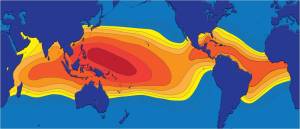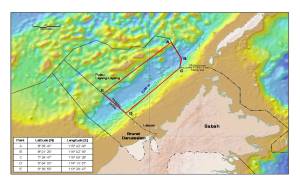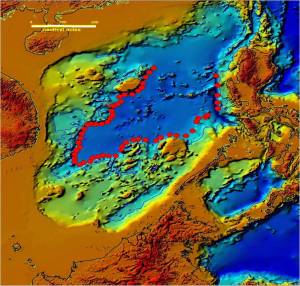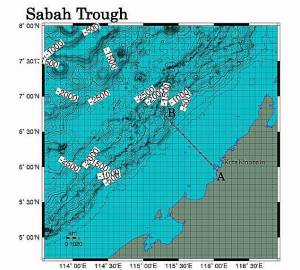OCEAN THERMAL ENERGY DEVELOPMENT IN MALAYSIA
Malaysia is not yet on any global map showing the areas with the potential of generating ocean-thermal energy. However, with the completion of a recent marine survey in the South China Sea during the period 2006-08 (MyMRS), it has been confirmed that indeed the temperature at the bottom of the North-Borneo Trough (and also known as “Sabah Tough”) at a water depth of 2900 metres (m) is about 3°C, compared to that of the surface at about 29º C. According to the popular scientific literature, any area with such a temperature-differential of over 22º C has the potential generating not only renewable energy but also freshwater.
Ocean thermal energy conversion relies on the fact that water near the surface is heated by sunlight while seawater deep in the dark is much colder. OTEC plants use warm surface water to heat ammonia or some other fluid that boils at a low temperature. The resulting gas is used to drive turbines that produce electricity. The gas is then cooled by cold water pumped up from the ocean depths and the resulting fluid is recycled to help generate power.
In other words “OTEC is a power plant to use warm surface seawater to evaporate working fluid of ammonia-water, and then the ammonia vapor drives turbines to generate electricity. The ammonia vapor is cooled by cold deep seawater to be condensed and the re-liquefied ammonia-water is recycled as the working fluid.”
Sabah Trough
It is located just some 100 kilometres off the Sabah coast. Look for it in Google maps and a red blimp marks its watery location in the South China Sea. Above water, there’s nothing to see, which is just as well, as the action only takes place about 2,900 metres down. And to understand the significance of the Sabah Trough, you must know that between 2006 and 2008, a marine survey would show a 4°C reading of the bottom temperature while the surface reading fell close to 29°C. For the uninitiated, this is a remarkable find in the field of science as any area with a temperature-differential of over 22°C not only has the potential to generate fresh water, but renewable energy as well.
GLOBAL OCEAN THERMAL ENERGY POTENTIAL
 (Source: www.lockheadmartin.com/us/products/otec.html)
(Source: www.lockheadmartin.com/us/products/otec.html)
POWER POTENTIAL & PROPOSED SCHEME


